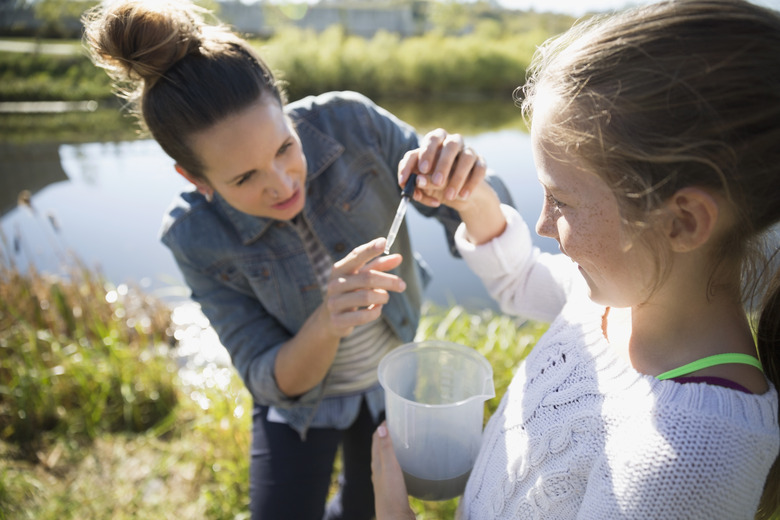How To Write A Protocol For Biology Experiments
Before performing an experiment, it is important for students to have a clear idea of the work they will be doing. The procedure portion of the protocol is always written in the present tense, using directive language, in contrast to the laboratory report, which is written in the past tense after the experiment is completed. A protocol should be concise but provide complete information to enable the reader to reproduce the experiment.
Step 1
State the purpose of the laboratory experiment at the beginning. Make this portion specific, with a title that describes the question your study addresses. For example, rather than "Effect of Fertilizer on Growth of Coffee Beans," make the title "Experiment to Test the Hypothesis That Adding Fertilizers Promotes the Growth of Coffee Beans."
Step 2
Introduce the experiment using background information. For this portion, select data that provide the context for your exercise. Refer to textbooks, scientific magazines and journals for information. For example, in a protocol for an experiment to test the effect of salt concentrations on the cytoplasm of plant cells, the introduction should explain the meaning of cell wall, and cytoplasm and other cellular organelles, along with their functions and information about plasmolysis.
Step 3
State the hypothesis that you wish to test during the experiment. For example, if you are working on the effect of temperature on butterfly growth, state your hypothesis as, "The butterfly from a pupa at a higher temperature will be bigger than one from a pupa at lower temperature."
Step 4
List out the materials to be used for the experiment, including chemicals, apparatus, equipment and instruments. Refer to the laboratory manual and write out the method you plan to follow in your own words. Use the present tense, numbering the steps in the order in which they are to be performed.
Step 5
List the dependent and independent variables in the experiment. In the butterfly experiment, the dependent variable is the appearance of the butterflies pupated at different temperatures, and the independent variable is the temperatures at which the pupae are kept. The control may be keeping both pupae in the same position and location and feeding the same amount of milkweed to both specimens.
Step 6
Describe the methods used to note observations and data collection. Provide a sample chart or table to be used for noting observations. Explain the method to be used to analyze these data by plotting a histogram or linear graph, or by performing a statistical analysis of the measurements.
Step 7
List in a separate References section the books, journals and websites that you cite in the protocol.
Cite This Article
MLA
Stewart, David. "How To Write A Protocol For Biology Experiments" sciencing.com, https://www.sciencing.com/how-to-write-a-protocol-for-biology-experiments-12749404/. 15 November 2019.
APA
Stewart, David. (2019, November 15). How To Write A Protocol For Biology Experiments. sciencing.com. Retrieved from https://www.sciencing.com/how-to-write-a-protocol-for-biology-experiments-12749404/
Chicago
Stewart, David. How To Write A Protocol For Biology Experiments last modified August 30, 2022. https://www.sciencing.com/how-to-write-a-protocol-for-biology-experiments-12749404/
